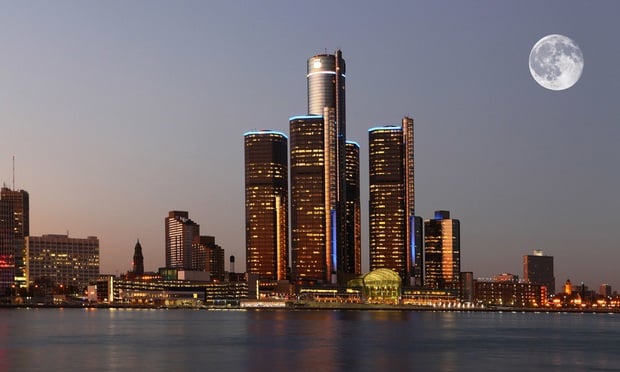Brownfields are abandoned or underutilized properties where real or perceived environmental contamination has slowed redevelopment. Grants may be awarded to address individual sites, or groups of sites, within a defined geographic area.
"Grants like these are often the first step in getting momentum for a site locally," Mick Hans of the EPA tells GlobeSt.com. "Fear and stigma are associated with these brownfield sites. Once the technical process is done, a legitimate study is done and options are quantified, the city and developers can usually make the redevelopment financially viable."
Nationally, more than 90 communities received funding of more than $38million for brownfields assessment and cleanup.
Keweenaw Bay, St. Louis, Three Rivers and Washtenaw County received new$200,000 brownfield grants. As a result, they will be eligible for the other EPA grant categories in the future.
Keweenaw Bay, an Indian community south of Houghton, will use its grant to assess ecological damage from past industrial uses at and around Sand Point, which it plans to develop into a recreational park.
St. Louis will use its grant to inventory and conduct preliminary assessments of dozens ofbrownfield sites in the area. A series of workshops to engage local stakeholders are also proposed.
Three Rivers, a community of 7,500, has targeted at least seven sites -- some owned by the city -- for assessment with its grant.
Washtenaw County will use its grant to focus on regional urban sprawl and transportation corridor issues, as well as an inventory and assessment of 10 to 15 sites in the Ann Arbor area.
Jackson County and Saginaw received $1 million revolving loan fund grants to support ongoing activities that previously received EPA grants.
Lansing received a $500,000 grant to advance redevelopment at the former Michigan Industrial Ho1dings property and two former metal recycling facilities owned by Jackson Iron & Metal. In addition, Jackson County received a $150,000 supplemental funding grant to expand the use of a 100-site inventory previously created by an EPA pilot grant.
Saginaw will use its grant to address several sites, including a vacant agricultural elevator, an abandoned riverfront steel recycling facility and a former soap manufacturing building.
Lansing will use its grant for two ongoing projects: expansion of the Lansing Convention Center and cleanup of contaminated sites in downtown Lansing that will then be used for the construction of an Arts & Education Center.
Since 1993, EPA has provided more than $162 million in brownfield grantswith $2.9 billion leveraged and over 11,000 jobs created.
Want to continue reading?
Become a Free ALM Digital Reader.
Once you are an ALM Digital Member, you’ll receive:
- Breaking commercial real estate news and analysis, on-site and via our newsletters and custom alerts
- Educational webcasts, white papers, and ebooks from industry thought leaders
- Critical coverage of the property casualty insurance and financial advisory markets on our other ALM sites, PropertyCasualty360 and ThinkAdvisor
Already have an account? Sign In Now
*May exclude premium content© 2024 ALM Global, LLC, All Rights Reserved. Request academic re-use from www.copyright.com. All other uses, submit a request to [email protected]. For more information visit Asset & Logo Licensing.






